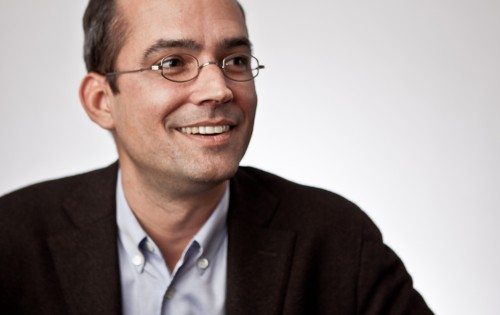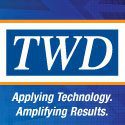
Gunnar Hellekson is the Chief Strategist for the U.S. Public Sector group at Red Hat – a multinational software company that provides open source software to the enterprise customers. Hellekson founded Open Source for America in 2010, is a member of the Military Open Source working group, and is the co-host of both the Dave and Gunnar Show and the FedOSS podcast. At Red Hat he works to encourage government agencies and systems integrators to embrace open software. Hellekson spoke to WashingtonExec at a time when he says government understands its infrastructure to be evolving into a standardized and automated service. He opened up to us about trends in the digitization of government, Red Hat’s OpenStack platform, and how he got into podcasting.
WashingtonExec: Could you tell us about your background and current role at Red Hat?
Gunnar Hellekson: At Red Hat, I am responsible for our strategy in the U.S. Public Sector Group — that’s federal, state & local and education. That means that on one hand I’m managing our public sector group’s relationship with the product groups inside Red Hat and making sure they know what the government needs, but it also means that I’m cultivating relationships with government executives so they can know where the open source communities are headed. I’ve got one foot in the business world and one foot in the technology world, which is pretty rewarding. I came to DC from New York, where I was the VP of Technology for an enterprise resource planning software as a service company, which was almost 10 years ago now. In New York, I also started a company that helped move for-profit organizations online. Moving into government work and moving down to DC was a sudden jolt but it’s been really rewarding.
WashingtonExec: Was there a point when you knew that open source technology was going to be a major theme in your career?
Gunnar Hellekson: Actually, I was really lucky because my mother was a librarian and she had access to all kinds of networks before a lot of people did; things like LexisNexus and CompuServe. So, when I was very young I was able to use her CompuServe account and sort of poke around and see what was going on. There I actually found a piece of software that I was enthralled with and it created fractals. I was reading through some of the literature about it and it wasn’t created by a company. It was created by a group of people; just this community called the Stone Soup Group. The idea that this software, which created these beautiful mathematical images, could be created by a community of practice was really exciting to me. As I moved through high school and into college I had access to more networks, got access to the internet, and I was learning how to write software and about technology using these communities. I realized that, for me, the technologies and the communities that created them were indistinguishable — they were the same thing and you couldn’t pull them apart — so it seemed natural to gravitate towards open source software. When I started doing work in the enterprise and then worked with government and realized how little open source software was being used – something had to be done.
WashingtonExec: Lots of people talk about the digitization of government: What do you believe the role of open source technology will play in this digitization as it moves into the federal space?
Gunnar Hellekson: When the U.S. government articulates this digital government strategy, and a lot of the themes inside this notion of digital government, you are going to see stuff like cloud and mobile and big data. All of those technology trends are not only underpinnings but are actually being driven by open source software. If you peel back one layer, it’s all open source underneath. If you look at the companies that are driving very disruptive changes in the technology world like Facebook, Google and Yahoo – those folks are all using open source software. I think that to the extent that the government can advance its digital government strategy it will be able to embrace the digital government strategy in as much as it embraces open source – I think they are the same thing.
WashingtonExec: What trends do you expect to see in the digitization of government in 2014?
Gunnar Hellekson: I think we are going to see agencies using open source, just as they always have, to reduce costs. It’s going to be replacing expensive proprietary software. We’ll certainly see that in the virtualization space. We saw a little bit of this in 2013, and I think we will see more in 2014, where infrastructure-as-a-service (IaaS) and the platform-as-a-service (PaaS) clouds, which the most viable ones, are open source. Those are really going to start taking hold and we’re going to start seeing a lot more innovation out of agencies that we hadn’t had before because they were kind of tied down by an inflexible infrastructure. This IaaS and PaaS makes it really easy to give developers, users and program managers the tools they need to really be creative about their missions, which I think is pretty exciting. I think another turn we are going to see in open source in government is the embrace of the open source process. We’ve seen this in the earlier stages with agencies like the Consumer Financial Protection Bureau who are not only using open source internally but are actually writing software and then releasing it to the open source community. We just saw a new release of the Data.gov data platform.
I think that the use of open source and the embrace of the open source community by government has been accelerating and that is going to continue into 2014.
WashingtonExec: What is the Red Hat Enterprise Linux OpenStack Platform and how do your customers use it?
Gunnar Hellekson: OpenStack is an umbrella for a number of open source projects that all work together under a common framework. The intention is to duplicate commercial cloud services and make them available on premise for ISPs and for enterprises. So, if you are enjoying a service like Rackspace or Amazon EC2, OpenStack is meant to let you be able to provide that service internally. OpenStack looks a lot like Linux did about 10 or 15 years ago. It’s a very chaotic market and it’s moving very quickly. They are doing major releases every 6 months. With Red Hat Enterprise Linux OpenStack Platform we’ve started contributing a lot of engineers to the OpenStack effort in order to make it more consumable by the enterprise. We then package it up with the same kind of subscription that we offer for Linux, in the hopes that all of the innovation happening in the OpenStack community can be made more easily available to government agencies.
WashingtonExec: Why do you think OpenStack has gained such rapid support from industry?
Gunnar Hellekson: First of all it’s a desperate need. I think there is broad consensus that what we need now is an open, hybrid cloud. It needs to be open in the way that open source is open, with open standards, and it needs to be hybrid; that is, you can’t just rely on public clouds and still keep managing our own on premise infrastructure the same way. I think we need to start mimicking the public cloud infrastructure internally. OpenStack is a crucial piece to that. We are seeing a lot of customers doing a crawl, walk or run where many of them have already virtualized and then they are going to start experimenting with on-premise cloud services, infrastructure as a service – like OpenStack and then graduating to Amazon EC2. It’s not really one or the other; they are actually doing all three at the same time.
WashingtonExec: You’re pretty vocal in the IT community and have two podcasts – is that right?
Gunnar Hellekson: I’ve got one primary podcast, “The Dave and Gunnar Show,” which I do with Dave Egts who is the Chief Technologist for Red Hat in the public sector group. The second podcast — which unfortunately has fallen to the wayside — though I do hope to pick it back up again — is the “FedOSS Podcast” which I did with Luke Fretwell of GovFresh.
WashingtonExec: What’s the story behind how you became involved with podcasting?
Gunnar Hellekson: Every Friday, Dave and I would have a debrief call and we would spend about an hour and a half to two hours going through everything that we were working on that week and just basically catching up. Some of that was work stuff but a lot of it was us just catching up on industry news and rumors and talking about the latest crazy Google acquisition and stuff like that. We had always joked about “let’s just do an hour of internal conversation and then we will do an hour of public stuff and then we’ll record it and put it on our website and see what happens”. We joked about it long enough that eventually one of us just hit the record button and that’s how it started. We got a lot of encouragement early on which was a surprise but really rewarding. I think we are now going into our 40th episode and it’s just been super fun. Doing a weekly podcast is a nice way to organize your thoughts. It certainly helps me to pay attention to the news — I can’t get away with skimming headlines anymore.


